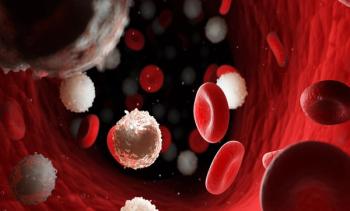
UIC Releases First Guidelines to Diagnose and Treat Perimenopausal Depression
A team of multi-institutional clinicians and scientists have recently published the first-ever guidelines for the evaluation and treatment of perimenopausal depression, endorsed by the International Menopause Society, in Menopause and the Journal of Women’s Health.
A team of multi-institutional clinicians and scientists have recently
While many people recognize the increased risk that women face during the postpartum period, the risk of depression that is associated with perimenopause tends to remain underrecognized. Perimenopause indicates the 3 to 4-year period prior to menopause onset when periods become irregular and eventually stop, as well as the first year after the final menstrual period.
“The reason these guidelines are needed is because depression during the perimenopausal phase can occur along with menopausal symptoms, and these two sets of symptoms are hard to tease apart, which makes it difficult for clinicians to appropriately treat these women,” said Pauline Maki, MD, professor of psychology and psychiatry at the University of Illinois at Chicago (UIC) College of Medicine and the co-lead author of the new guidelines in a
The task force reviewed available scientific literature on depressive orders and symptoms in perimenopausal women, and created recommendations and guidelines for a variety of categories, including:
- Epidemiology
- Clinical presentation
- Assessment and diagnosis
- Treatment of major depressive disorder with antidepressants and psychotherapy
- Estrogen therapy
- Alternative therapies
The guidelines note that the risk of depressive symptoms is elevated during perimenopause, regardless of whether women have history of major depressive order. Some other risk factors include sociodemographic factors, psychosocial factors, menopause symptoms, anxiety, and reproductive-related mood disturbance.
“Many women experience a new onset of depressive symptoms. If there is underlying low-level depression to begin with, perimenopause can increase the intensity of depressive symptoms,” said Maki.
Several common symptoms of perimenopause such as hot flashes, night sweats, sleep and sexual disturbances, can complicate or occur concurrently with the presentation of depression during this stage. Although a menopause specific mood-disorder scale does not exist, several general validated screening measures may be used for the determination of mood disorder diagnoses.
Maki explained that the perimenopause period is a window of vulnerability for women to develop both depressive symptoms and major depressive episodes. Specifically, she noted that midlife women have shown a 45% increase in suicide rates over the past 15 years.
“It is important for women and their healthcare providers to recognize that these symptoms are common during perimenopause and can be treated,” Maki said.
References
1. Maki PM, Kornstein SG, Joffe H, et al; Board of Trustees for The North American Menopause Society (NAMS) and the Women and Mood Disorders Task Force of the National Network of Depression Centers. Guidelines for the evaluation and treatment of perimenopausal depression: summary and recommendations [published online September 4, 2018]. Menopause. doi: 10.1097/GME.0000000000001174.
2. Maki PM, Kornstein SG, Joffe H, et al. Guidelines for the evaluation and treatment of perimenopausal depression: summary and recommendations [published online September 5, 2018]. J Womens Health (Larchmt). doi: 10.1089/jwh.2018.27099.mensocrec.
Newsletter
Stay ahead of policy, cost, and value—subscribe to AJMC for expert insights at the intersection of clinical care and health economics.













































